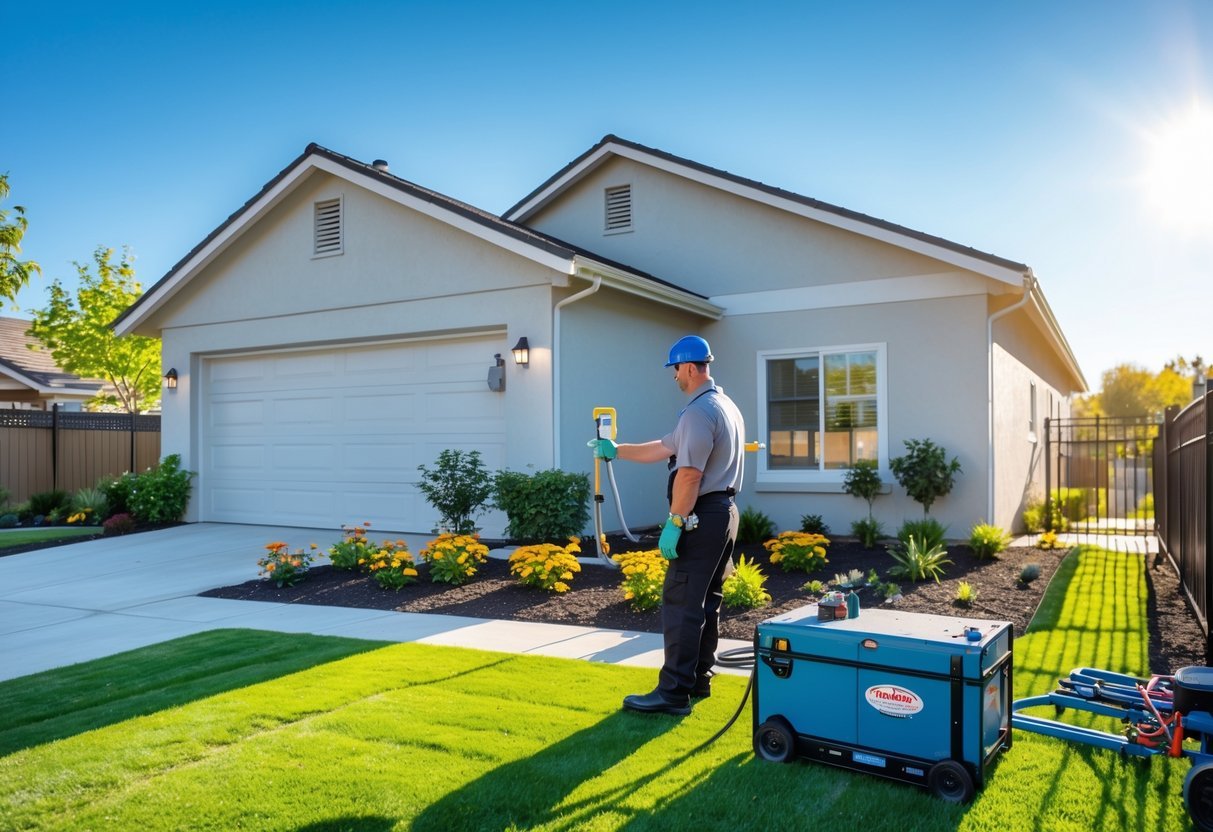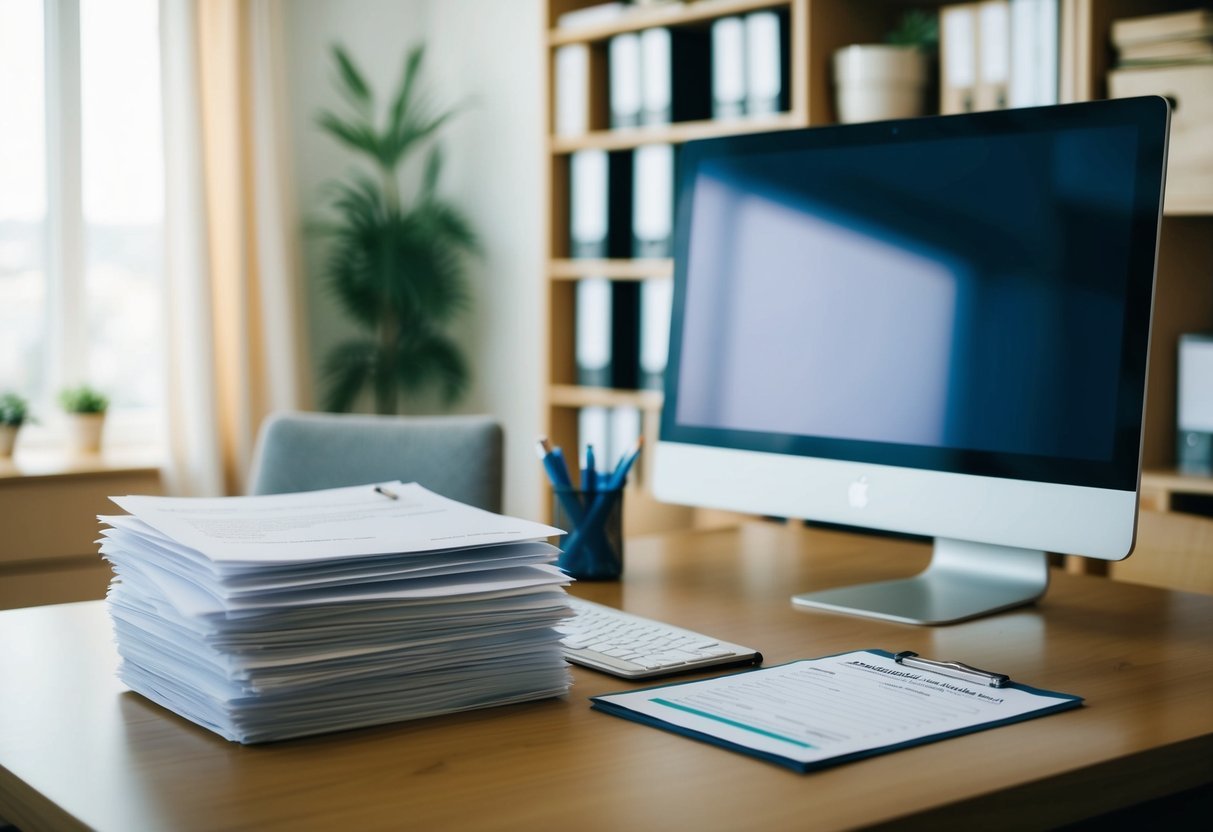As a landlord, preparing for unexpected property expenses is essential to keeping your investment on track and tenants satisfied. A maintenance reserve is a fund you set aside specifically for both routine and emergency repairs at your rental property, ensuring you have the money needed when issues arise. Setting up this fund is one of the smartest moves you can make to avoid financial stress and protect your cash flow.
You might wonder how much should go into your maintenance reserve. Industry guidelines suggest putting aside between 10% and 30% of your gross rental income or annual rental income each year, depending on factors like property age, condition, and location. Having a clear strategy for your reserve fund helps you avoid sudden out-of-pocket costs and ensures your property stays in good shape for the long term.
Key Takeaways
- A maintenance reserve is crucial for covering unexpected repairs.
- Set aside a percentage of your rental income based on property needs.
- A strategic reserve fund reduces financial stress and keeps repairs manageable.
Understanding Maintenance Reserve for Rental Properties
A maintenance reserve acts as a financial buffer, protecting you from unexpected and routine property expenses. It helps ensure steady cash flow and property value by preparing for repairs, major systems replacements, and maintenance obligations.
Purpose and Importance of Maintenance Reserves
A maintenance reserve is a dedicated fund set aside to cover future maintenance costs, both planned and unexpected. This reserve allows you to respond quickly to urgent repairs and routine upkeep without disrupting your personal finances or income stream.
Maintaining a proper reserve also supports tenant satisfaction because essential maintenance can be completed promptly. This decreases the risk of property damage escalating due to delayed repairs and minimizes vacancies.
An adequately funded reserve promotes financial stability for your rental business. Landlords who budget for a maintenance reserve are better equipped to handle expensive repairs such as HVAC replacements, roof repairs, or plumbing issues. Setting aside this fund can help you smooth out cash flow and avoid large, sudden expenses that disrupt operations, as explained in guides on the importance of maintenance reserves.
Types of Maintenance and Covered Expenses
There are several types of maintenance covered by a reserve fund, including both routine and major maintenance. Routine maintenance includes basic upkeep tasks such as gutter cleaning, landscaping, seasonal servicing of HVAC systems, and small plumbing repairs. Major maintenance refers to less frequent, often costly repairs like roof replacement, foundation work, and systems overhauls.
Your reserve fund should also be used to address emergency repairs, which can arise without notice, such as a burst pipe or malfunctioning water heater. Expenses may further extend to line maintenance, which covers wear-and-tear from normal use, and overhaul maintenance, such as boiler or engine overhauls in multifamily or larger units.
Generally, maintenance reserves do not cover recurring operational costs such as utilities or property taxes. Instead, they are aimed at helping you manage the unpredictable aspects of property management, as discussed in guides on property reserves.
Common Covered Expenses:
- HVAC repairs or replacements
- Roofing repairs
- Plumbing issues
- Appliance replacement
- Pest treatment
- Structural repairs
Legal and Regulatory Obligations
Proper maintenance reserves are not just practical—they can also be legally required in many situations. Lease agreements sometimes mandate that you, as the landlord, maintain property conditions to a specific standard. Regulatory bodies often require adherence to codes governing safety, habitability, and property maintenance.
Failing to maintain your rental property can lead to fines, legal disputes, or required remediation by local authorities. Keeping a reserve helps you stay compliant with requirements for habitability and timely repairs, protecting both your investment and your tenants.
Financing and insurance agreements may also require a minimum maintenance reserve for certain types of real estate or larger complexes. Understanding your obligations ensures you set the right budget and reserve structure to maintain regulatory compliance, as many property management experts highlight in their advice for managing maintenance reserves.
You should regularly review state laws, local ordinances, and your lease agreements to determine how much to set aside and what specific maintenance costs are legally enforceable.
Strategic Management of Maintenance Reserves
Managing a maintenance reserve fund helps you anticipate routine and unexpected property expenses and preserve the long-term value of your investment. Strategic oversight of this process safeguards your cash flow and supports better financial planning for your rental properties.
Budgeting and Reserve Contributions
Budgeting for a maintenance reserve begins with evaluating your property’s age, size, and condition. Properties that are older or have deferred maintenance may require a higher reserve allocation. Factoring in local operating conditions and historical maintenance costs helps you estimate ongoing and emergency repair needs.
A common method is to set aside a percentage of your monthly rent or use a fixed dollar amount per unit. You can create a table comparing different methods:
| Reserve Formula | Example Calculation |
|---|---|
| 1% of Property Value Annually | $250,000 property: $2,500/year |
| Per-Unit Per Month | $35 x 12 units x 12 months = $5,040 |
Consulting with a CPA or facility manager helps you decide the right reserve amount. Tracking your maintenance reserve in a dedicated financial account ensures transparent accounting for future repairs.
Impact on Cash Flow and Investment Performance
Setting up a maintenance reserve directly affects your operational budget and monthly cash flow. Reserve contributions reduce the funds available for immediate use, but they provide a safeguard against large, unexpected costs that can impact mortgage payments or disrupt capital planning.
By maintaining enough reserves, you can avoid the need for loans or emergency spending when major repairs or overhaul costs arise. This stability supports the long-term asset value and performance of your rental properties while minimizing the risk of reactive maintenance draining resources.
Carefully planned contributions also help prevent sudden dips in return on investment. Separating the reserve from your main accounts helps you monitor your property’s financial health and improve your overall investment strategy.
Operational Considerations and Risk Management
Regularly reviewing your reserve fund is essential for adapting to changing property needs. As your property depreciates, you may need to increase your reserve to address more frequent emergency repairs or unplanned maintenance.
Use annual maintenance schedules and inspections to estimate future costs. Tracking association fees and interest earnings on your reserve account can improve your financial planning. Facility managers can help by providing reports on asset condition and anticipated repairs.
A robust maintenance reserve reduces the impact of deferred maintenance and supports compliance with lender or association requirements. This lowers your risk and allows you to handle both emergency maintenance and regular upkeep efficiently.
Frequently Asked Questions
Creating a solid maintenance reserve fund for your rental property means using proven formulas, understanding what costs are involved, and reevaluating your approach as property conditions and expenses change. Matching your reserve with real-world factors can help prevent financial shortfalls and support long-term asset preservation.
How should a landlord calculate adequate cash reserves for rental property upkeep?
A common method is to set aside at least 1% of your property’s value per year specifically for maintenance. You should also consider expected and unexpected repairs, the age of the building, and historical repair costs when deciding on the exact reserve amount.
What factors determine the ideal amount to set aside for turn reserves in real estate?
The property’s age, current condition, and likelihood of tenant turnover are major influences. Newer properties generally need lower reserves, while older properties or those in high-turnover areas may require more. Assess the state of major systems like plumbing and roofing to adjust your reserve target accurately.
What does a maintenance reserve fee typically cover in rental property management?
Maintenance reserve fees are generally used to pay for unexpected repairs, routine upkeep, and operational expenses. This can include anything from appliance replacement and plumbing issues to exterior repairs, pest control, and periodic maintenance.
How can the 2% rule be applied when budgeting for rental property maintenance?
Using the 2% rule means you should allocate 2% of your property’s annual value towards maintenance reserves. For example, if your rental property is valued at $250,000, you would set aside $5,000 each year for repairs and maintenance to help cover both routine and unexpected expenses.
What guidelines should property owners follow to ensure sufficient financial buffering for unexpected repairs?
Property owners should regularly review typical repair costs, major building system lifespans, and local market conditions. Keeping cash reserves at least equal to a recommended percentage—like the 1% or 2% rule used by many landlords—provides a reasonable buffer for most situations.
How frequently should rental property maintenance reserves be reviewed and adjusted?
Review your maintenance reserve fund annually or whenever you make significant updates to the property. Adjust the reserve if you notice increased repair frequency, changes in local costs, or after significant renovations that may impact future expenses. Consistent monitoring helps ensure your reserves match real property needs.



